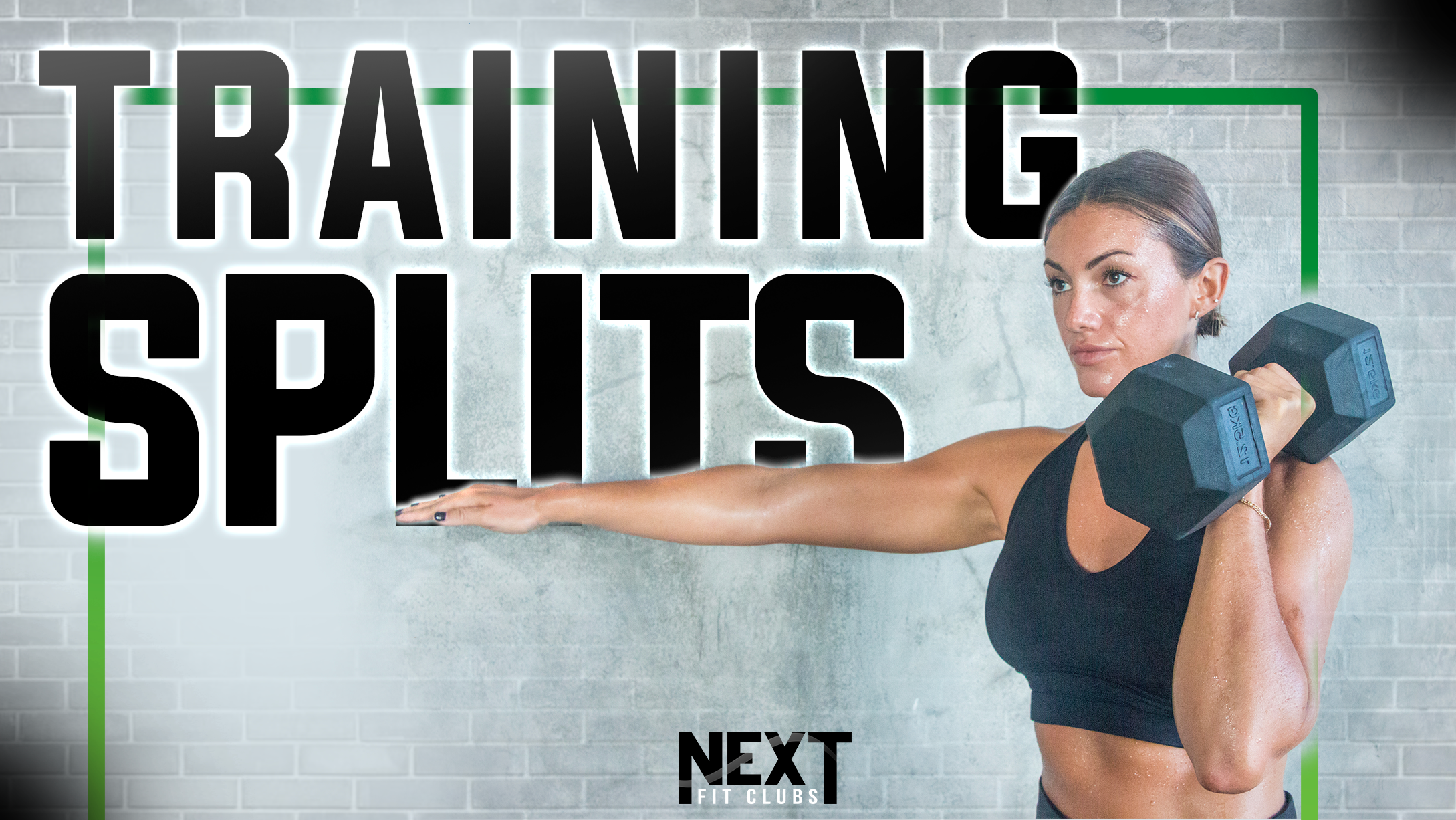Training Splits
What are training splits?
A training split is an organized workout outline for the upcoming week. It offers both the coach and athlete guidelines that will allow proper progression month to month/year to year, so we continually see gains in strength, muscle, fat loss, hypertrophy, whatever the goal may be; all while still allowing for proper recovery and that will also allow the athlete to train hard and consistently.
What is the best training split?
This is a very individualized question, as not every training split is one size fits all. First, you must determine what your goal is? Are you trying to create a baseline of fitness; maintain your current shape; put on mass; lose body fat? If you have a specific goal in mind it, becomes easier to pick the correct split for you.
What is your training age/experience? Beginners often can benefit from less volume in their training programs than advanced lifters. Although, in some cases, more frequency is required. Again, training is very individualized.
What is your availability? How many days a week can you legitimately commit to training? There are splits that allow for training 3 days a week while some require 5-6 days a week. A training program is only as good as its execution. Determine what you’ll be able to do and execute.
What is your ability to recover? Recovery isn’t just based on how sore your muscles feel. It also takes into account your job, lifestyle, sleep, and mental health. If you’re starting to feel burned out, you may need an extra rest day or two. Remember, growth takes place away from the gym and benefits from adequate rest and a solid nutritional foundation.
Exercise selection in a training split is also paramount to a program’s success. If you’re an athlete trying to become stronger and more explosive, then following a workout routine that is mostly isolation exercises won’t benefit nearly as much as concentrating on compound movements and developing or increasing fast twitch muscle fibers. But I digress, now we are getting a little too deep into this. After all, we are just here to learn about the different types of training splits. Here are just some examples of those:
Training Splits include but are not limited to:
-
Full Body Split- Train the body as a whole as opposed to broken down into body parts/sections
-
Upper/Lower Split- Generally used when training 4 times a week. 2 days are upper body focused with the other 2 lower body focused
-
Push/Pull- Training is broken up into movement patterns
-
The Body Part Split- This is your typical bodybuilder split attacking one muscle group at a time
What is a Full Body Split?
Full body split is just what it sounds like. You will not target one specific body part or movement pattern but all of them at one time. One of the great benefits of a full body split is that it can be an effective training program for lifters of all levels, from beginner to even those with years of experience under their belt.
An advantage of the full body split is it allows you to train more muscles with fewer workouts. If you are limited on time or availability for the gym then a full body split may be for you. If you are using a traditional “bro” split it may take up to or close to 2 weeks to train the same body part again.
Your body will manage fatigue better. You will also recover faster which allows you to train more often if your schedule permits. Not only will you recover better but you reduce the risk of injury due to overuse.
Monday:
A. Deadlift – 5×3
B. Bench Press – 3×6
C. Lunge – 3×8-12
D1. – Farmer Walk – 3×30 seconds
D2. – Dip – 3x 30 seconds – timed set
Tuesday:
Rest
Wednesday:
A. Push Press – 5×3
B. Rack Pull – 4×6
C. Chin-Up – 3×8-12
D1. Plank – 3×30 seconds
D2. Biceps Curl – 3x 30 seconds – timed set
Thursday:
Rest
Friday:
A. Back Squat – 5×3
B. Bent-Over Row – 4×6
C. Dumbbell Bench Press – 3×8-12
D1. Kettlebell Crosswalk – 3×30 seconds
D2. Hip Thrust – 3×12
Saturday/Sunday:
Rest or Active Recovery
Upper-Lower Split
Upper-Lower splits are a fantastic progression for anyone looking to move on from a basic 3 day full body split. The workouts can be spread over 4 days during the course of the week. This allows for more recovery and opportunity to add training volume to your programming. This split is fantastic for both strength and size gains as it offers moderate frequency with moderate to high training volume for hypertrophy.
The downside of the upper-lower split is it can be brutal the first few weeks to anyone who is not accustomed to training legs twice per week. This generally subsides as the body adapts to the new training style, but we would recommend starting with antagonist training (opposite muscle groups) to ease into the intensity of a full leg day. This would involve performing quad dominant exercises and then alternating with a hamstring or glute dominant movement.
Monday: Upper Body (Push Strength Emphasis)
Tuesday: Lower Body (Squat Pattern Strength Emphasis)
Wednesday: Rest or Active Recovery
Thursday: Upper Body (Pull Strength Emphasis)
Friday: Lower Body (Hinge Pattern Strength Focus)
Saturday/Sunday: Rest
Push-Pull Split
Push/pull splits break training up by movement pattern. The movements on the posterior side of the body are predominantly responsible for pulling actions while the front/anterior side of the body is responsible for pushing actions. Legs are often paired on “pull” days. Push/pull routines are suitable for intermediate-advanced trainees. They’re an economical way to train and allow for flexible planning. Moderate frequency of movement is better for skill acquisition than body part splits performed once per week.
Push/pull splits are of limited use with athletic populations because they segregate the body by muscles that work together. Push-pull routines are also a bit advanced for beginners who want to maximize their gains.
Day 1: Pull (legs/hamstrings, back, biceps, lower back)
Day 2: Push (chest, shoulders, triceps, legs/quads, abs)
Day 3: Rest
Day4: Pull (legs/hamstrings, back, biceps, lower back)
Day 5: Push (chest, shoulders, triceps, legs/quads, abs)
Day 6: Rest or Active Recovery
Day 7: Rest
Body Part Split
Body part splits use greater exercise variation to target individual muscles. They’re great for “shocking” muscles into growth due to high-localized volume, especially for lifters that typically train in total-body style routines. Increased volume and metabolic stress lead to greater hypertrophy than other splits. Just make sure you have a significant training base before jumping ahead.
It’s difficult to train with heavy multi-joint lifts without some degree of hindered recovery from previous workouts. You better have your workout nutrition, sleep needs, and other recovery essentials taken care of.
Body-part splits are time consuming and impractical for busy people with fluctuating schedules because missing one routine throws off the flow of the program. Many body part splits “major in the minors” and are cosmetic based rather than performance based – not the best option for athletes or beginners.
Monday: Chest
Tuesday: Back
Wednesday: Shoulders
Thursday: Legs
Friday: Arms/Abs
Saturday/Sunday: Rest
These are just examples of some of the most common training splits. There are different branches and deviations to these splits as well as dozens and dozens of various other types of training splits. If you need help finding out which type of training split is right for you, sign up for a complimentary Personal Training Evaluation at our front desk, send us a direct message on social media, or shoot us an email. Let’s take your training to the NexT level!





0 Comments